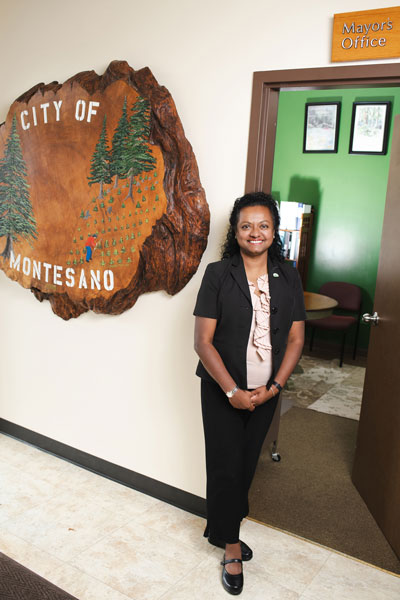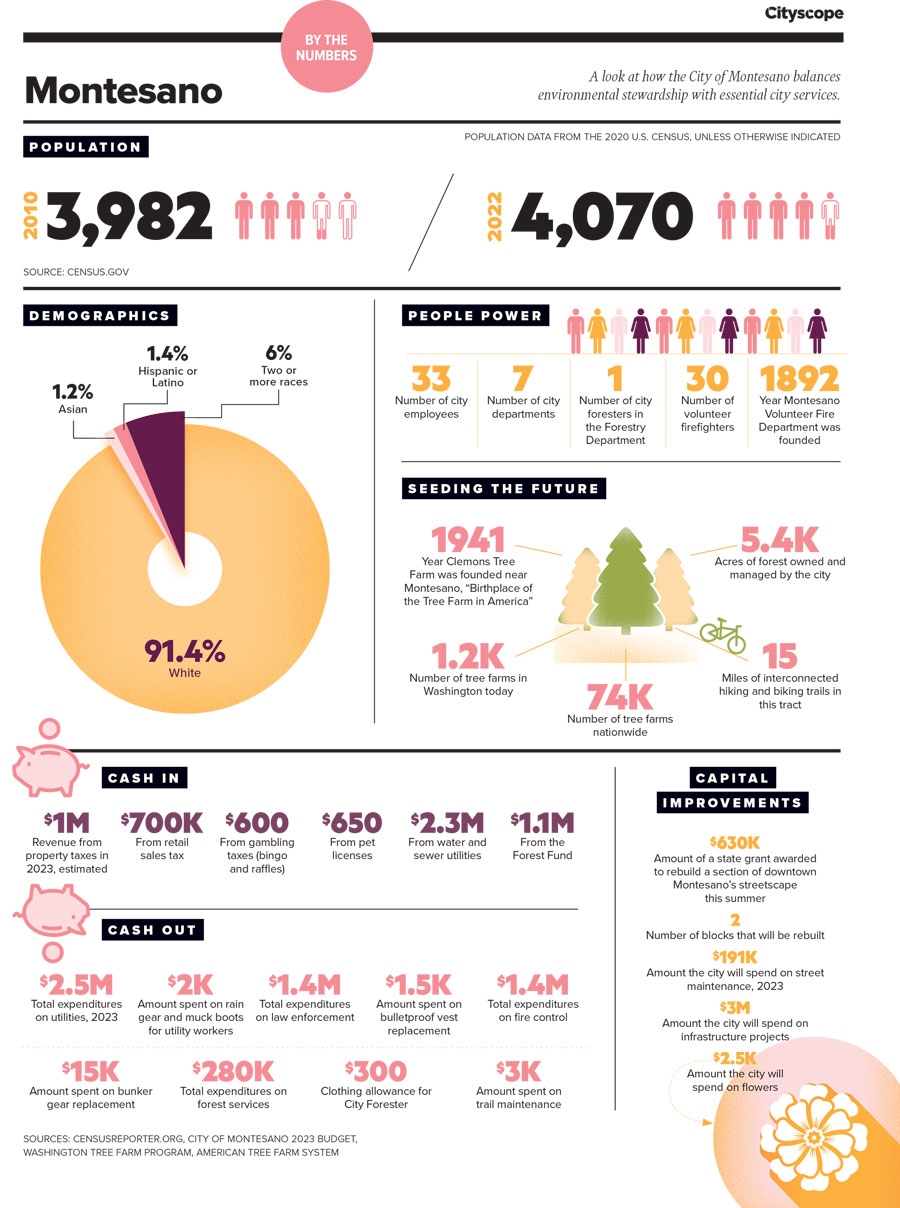Vini Samuel reflects on her trailblazing role as America’s first woman Indian American mayor, and her legacy as Montesano’s roadbuilder-in-chief.
Interview by Allyson Meyer
You were born in India and your family moved to Juneau, Alaska, when you were seven. How did you end up in Montesano?
After receiving a bachelor’s degree in history and English from Western Washington University, I decided to study law at Seattle University. I had expected to return to Alaska after I finished law school, but my husband got a job in Olympia. Grays Harbor County is a lot like Juneau, with lots of trees, fish, and rain. So, when I was starting to look for a job in 1997, we drove down to Montesano and I was like, ‘Oh, I know this place.’

Montesano Mayor Vini Samuel
How do you describe Montesano?
It’s a place you can fall in love with. It is Mayberry. It is the best of what small towns are. If you like to be outdoors, there’s hiking and fishing on the river right outside your door. And if you get in the car you can go to the ocean or you can go to a mountain. I often say, ‘If you don’t like to be outside, this might not be the right community for you.’
Montesano might be a destination for outdoor recreation, but historically it always has been, and still is, a timber town. How has that evolved over time?
We’re the birthplace of the first tree farm in the United States. In 1941, Weyerhaeuser dedicated the 120,000-acre Clemons Tree Farm as an experiment to start farming trees instead of slash and burn. Before that, timber was harvested, and the land was left bare; there was no effort to replant and consider future generations. Today, there are over 900 tree farms in Washington state and 80,000 family-owned tree farms in America.
And one 5,400-acre tree farm is owned and managed by the City of Montesano.
Our city forester works towards continuing goals for sustainable timber, fish, wildlife, and recreation. The city forest is home to over 15 miles of interconnected hiking and biking trails. We have a proud history of environmental stewardship, and because of that my community feels very much like the outside is an integral part of who they are—nature, wildlife, hunting, and fishing—that’s all part of the lifestyle.
As a lawyer with a successful local practice, what prompted you to run for mayor in 2015?
I went to many people who I thought would do a very good job being mayor and none of them wanted to run. So my son said, ‘I guess you’ll have to run.’ And I said, ‘I can’t.’ It wasn’t so much about being mayor as it was about the time involved as I wasn’t sure how I was going to work full time and balance being mayor. But he was right. If you complain enough, you better stand up and do something about it. That’s why I ran.
You’re the first woman to be elected mayor in Montesano’s history and the first Indian American woman mayor in the United States. What does that mean to you?
You become the symbol of things that are way beyond what you’re doing. What I learned is that the first of anything is always symbolic, and that symbol is really about the efforts of everybody else all focused on one person. All of a sudden, there’s a larger responsibility for what that symbol means because you’re not carrying your own work, you’re carrying everybody’s work and trying to honor that.

Montesano's seal references the city's history of environmental stewardship.
What do you enjoy most about being mayor?
I’ve been in private practice my entire career, and as mayor, I’ve learned so many things that never would have been part of my life experience.
Such as?
When I started, I didn’t have a lot of construction experience. Now Montesano is under construction. We’re building a better city, one block and one project at a time. Our city has never looked more beautiful. The entrance to our city is a great example. When I first took the oath of office as mayor nearly eight years ago, improving Montesano’s front door was a top priority. I can’t tell you how many hours I’ve spent on different ideas for developing and funding for that site. It took two terms. I could have given up on the idea after the first setback, or the second, or the third. But nothing worth doing is easy.
This summer, with a $630,000 grant from the Washington State Transportation Improvement Board, the city will rebuild a two-block stretch of Pioneer Avenue, Montesano’s main street, replacing curbs, sidewalks, and pavement. In one of your monthly newsletters, you wrote, ‘I love the smell of asphalt in the morning.’
I swear, I love the smell of asphalt! When I’m on a morning walk or an evening walk and I smell it, I go, ‘Ahh.’ When I smell asphalt, I know something has been built.
What do you think will be your legacy as Montesano’s mayor?
No one is going to remember what I did in 100 years, and streets need to be repaved in 20 to 30 years. So the word legacy is meaningless in some ways. My husband told me once, and I think this is true: ‘No one remembers what you did yesterday. It only matters what you do today and tomorrow.’ There’s an old children’s book about planting flowers—planting the seeds. I always think to myself, ‘Did you leave it better than you found it? Did you work hard enough? Did you get enough things to bloom?’
